Prehistoric Art
1/10
There's no tags or description
Looks like no tags are added yet.
Name | Mastery | Learn | Test | Matching | Spaced |
|---|
No study sessions yet.
11 Terms
- from camel-like animal
- bone worked to create image/skull of dog/wolf
- one natural form used to take the shape of another
- found in 1870
- Mesoamerican idea: a sacrum is a "second skull"
- important role in traditions
- representative of doorways that permitted spirits/deities to enter physical world
Camelid sacrum in the shape of a canine
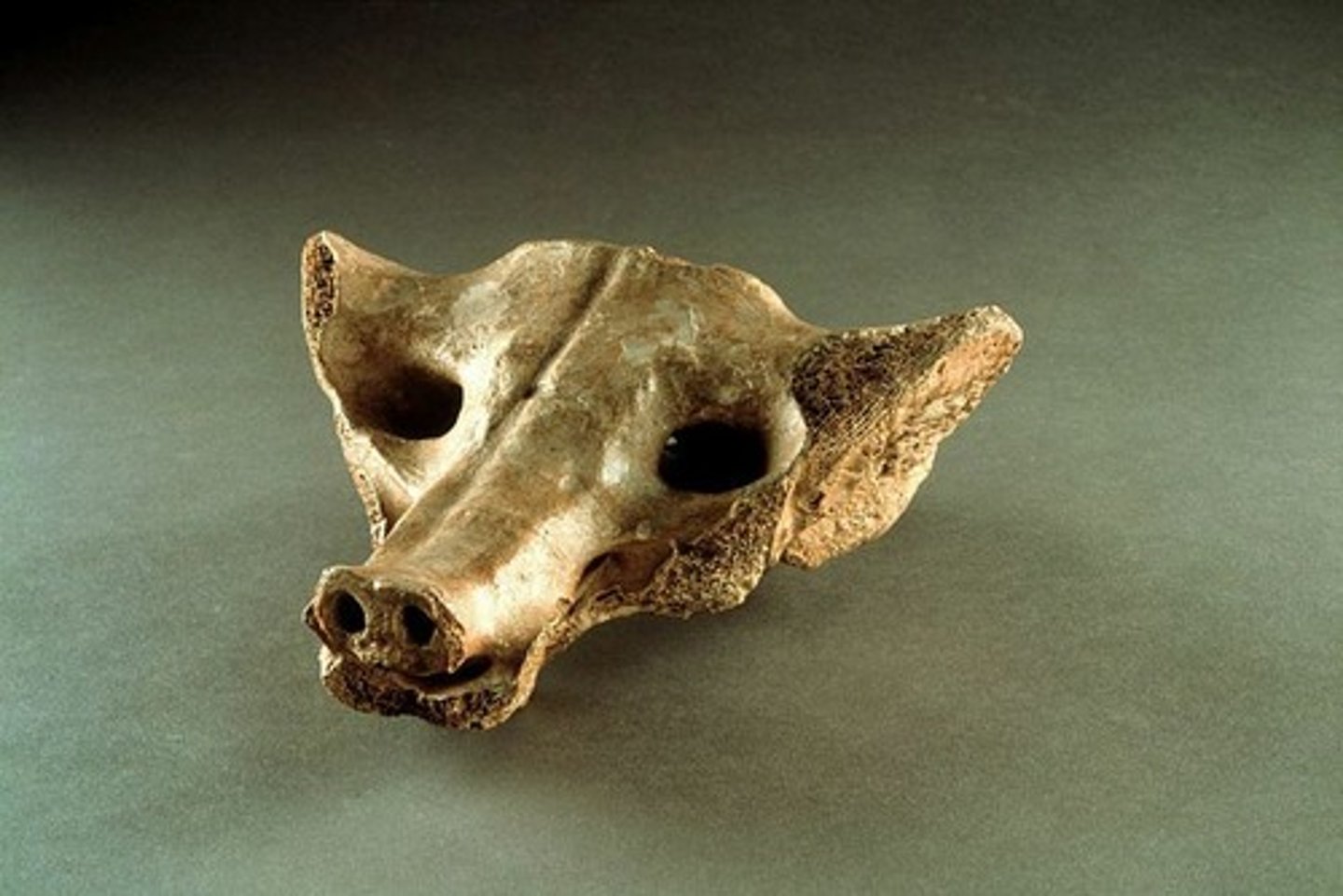
- one of earliest known works of art from Arabia
- found in area w/ extensive ancient trade routes, near Ha'il (features tombs carved into sandstone cliffs)
- religious/burial purpose
- belted robe that a double-bladed knife/sword hangs from
Anthropomorphic stele

- abstract designs: main decoration is a face pattern (w/ human and animal influences), maybe of spirits/deities
- corners w/ mask-like images w/ pronounced eyes and fanged mouth
- in burials of people of high rank
- jade liked with virtues of durability, subtlety, beauty
- Neolithic era
Jade cong
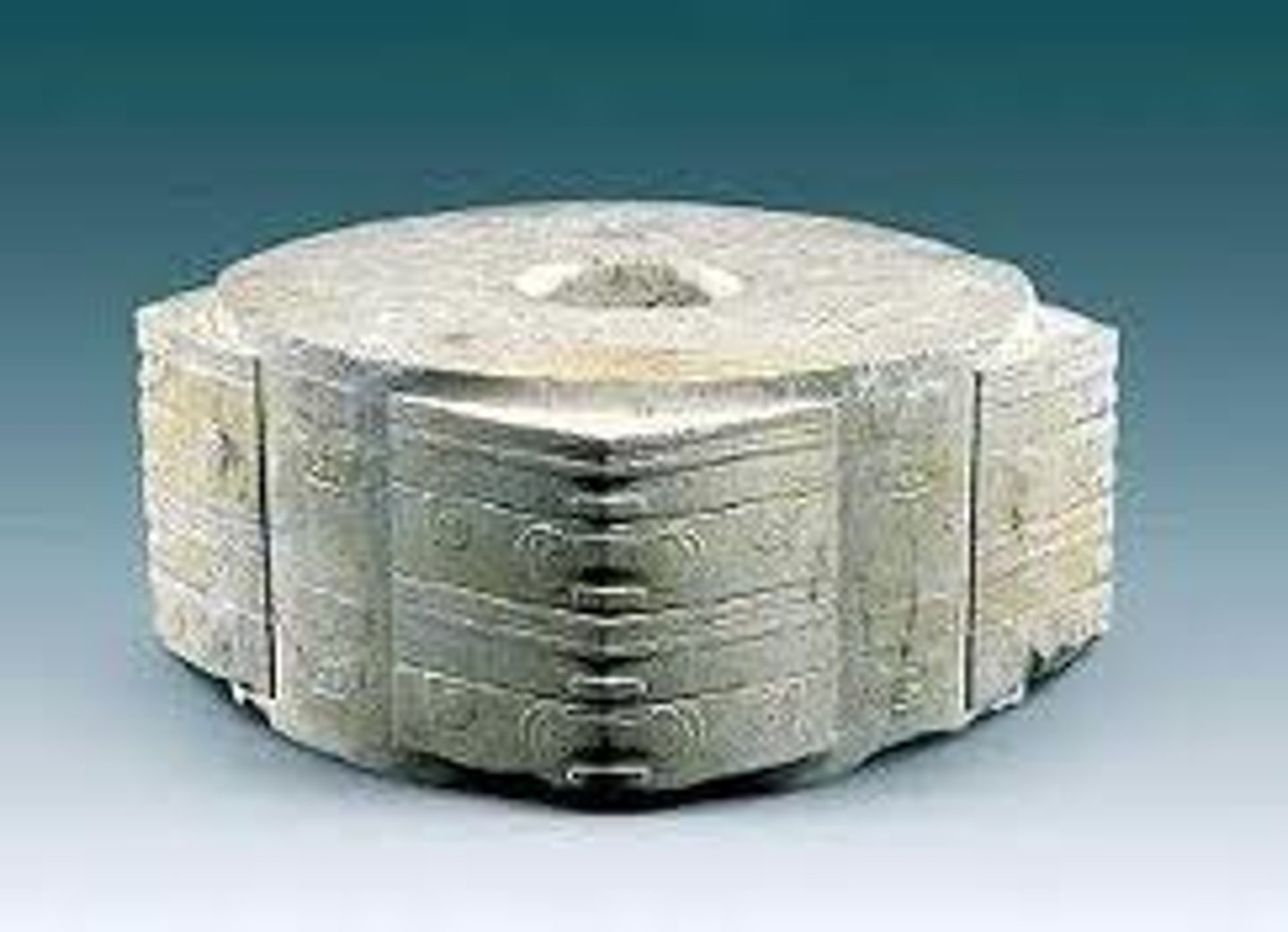
- Stone Age
- composite human/animal figure (anteater head + human body?)
- theorized to be a pestle, maybe w/ ritual purpose
The Ambum Stone
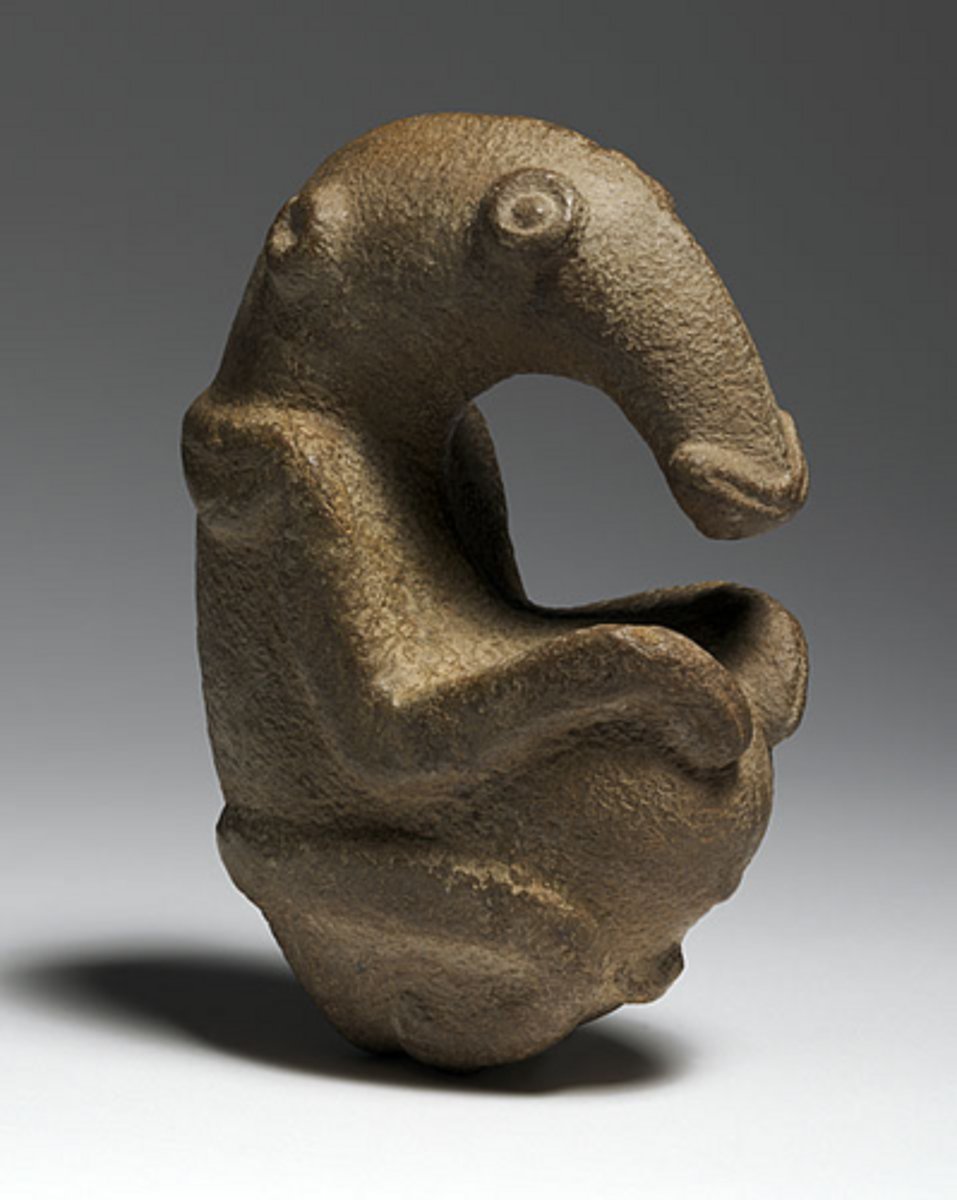
- many shapes and forms
- detailed hair styles, clothing, body ornaments
- many w/ deformities, including 2-headed (Siamese twins?)
- shamanistic function?
- fertility cult practices?
Tlatilco Female Figures
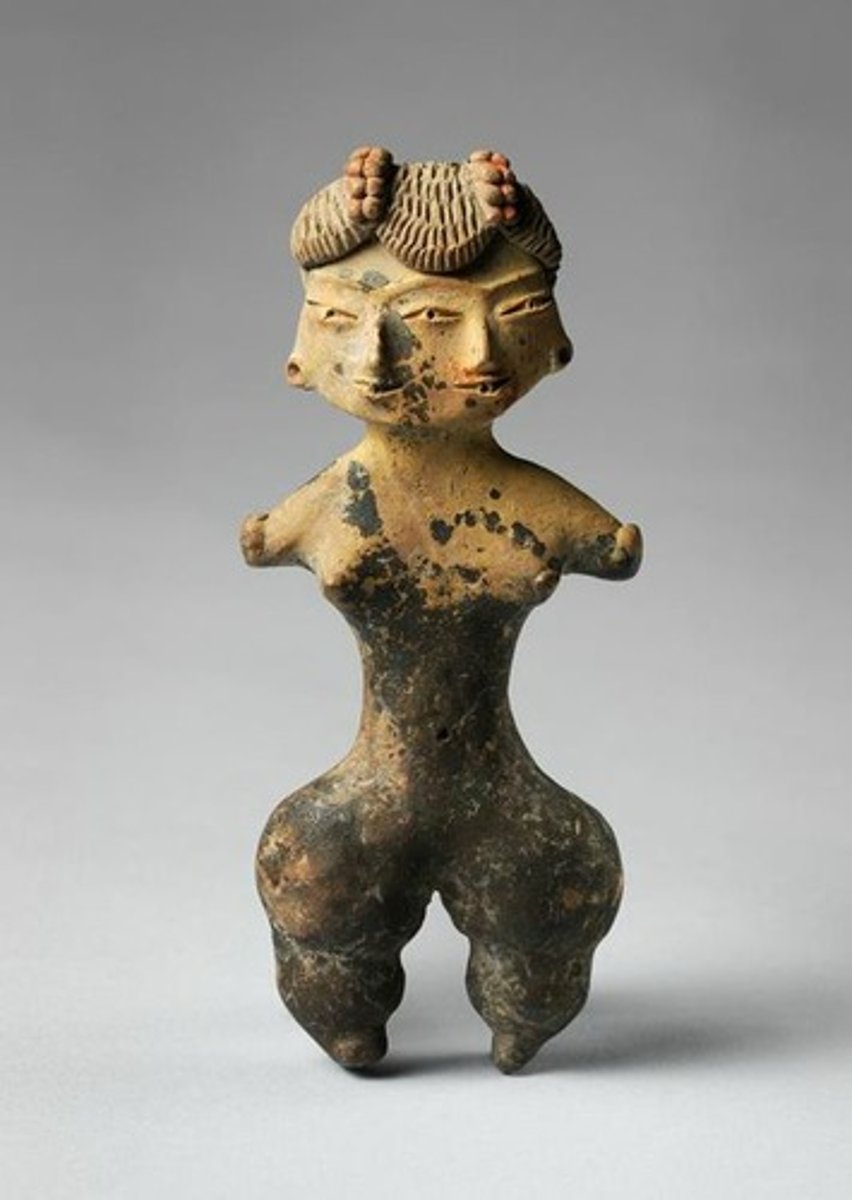
- Lapita peoples (in the Pacific) known for pottery
- characteristic use of curved stamped patterns (dots, circles, hatching)
- outlined forms
- one of oldest human faces in Oceanic Art
Terra-cotta fragment

- 7 stone fragments, several w/ familiar images of animals in characteristic profile
- named after Apollo 11 moon landing (cave discovered at this time)
Apollo 11 stones
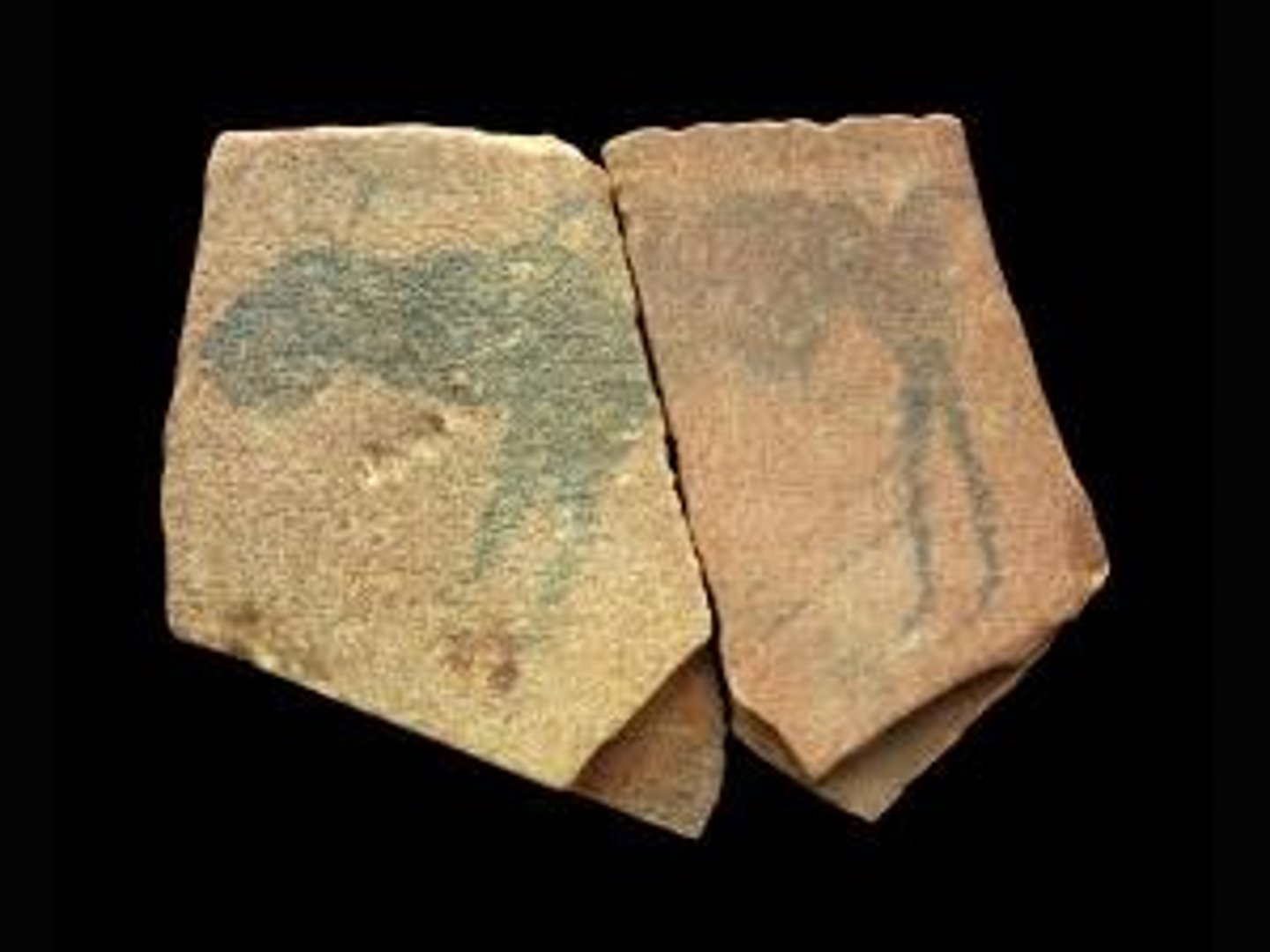
- paint made w/ natural products
- paint colors bound with animal fat
- 650 paintings; most common cows, bulls horses, deer
- paintings far from entrance
- profile view; some appear pregnant
- many overlapping figures
- evidence still visible of scaffolding
- evidence some people sought shelter at mouth of caves
- walls scraped for even surface
- flat stones as palettes
- theories: ensured successful hunt, ancestral animal worship, might have flung spears for target practice
Great Hall of the Bulls

- more than 15,000 drawings/engravings found at site
- once grasslands, now desert
- drawing varied
- livestock, wildlife, humans
- site probably painted by many different groups over long time
- bodypaint and horns evidence of ceremonial attire
- much larger than other beings in image
- representation of deity/woman participating in ritual?
Running Horned Woman

- found near burial site, along with hundreds of baskets, bowls, metallic items
- use of potter's wheel
- thin walls of pot
- stylized aquatic birds on top; stylized running dogs w/ long narrow bodies on bottom
- middle of horns: clan symbol of family ownership
- identifies deceased as belonging to particular group/family?
- geometric patterns
- evidence indicates used in secondary burial rituals where remains moved to another burial area after flesh removed
Beaker with ibex motifs
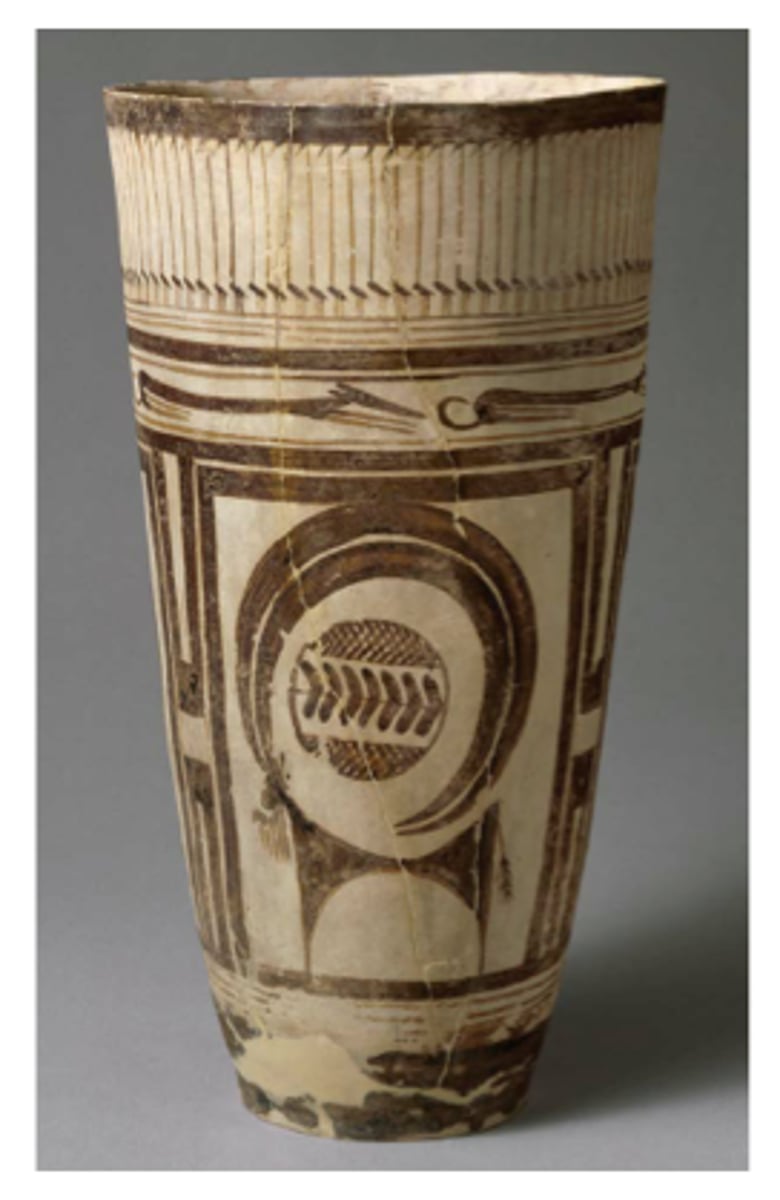
- maybe took 100 years to build over time
- post-and-lintel building w/ mortise-and-tenon
- large megaliths in center > 20 ft tall; form horseshoe surrounding central flat stone
- ring of megaliths (originally w/ lintels) surrounding horseshoe
- very heavy stones
- hundreds of smaller stones around monument
- some stones imported from > 200 miles
- thought to be oriented toward sunrise on summer solstice or predict eclipse
- new theory: center of ceremonies concerning death and burial
- one of many henges in southern England
Stonehenge
